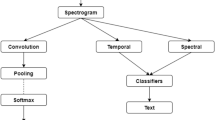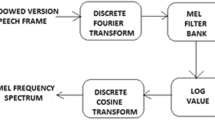Abstract
Tone information is very helpful to improve automatic speech recognition (ASR) performance in tonal languages such as Mandarin, Thai, Vietnamese, etc. Since Myanmar language is being considered as a tonal language, the effect of tones on both syllable and word-based ASR performance has been explored. In this work, experiments are done based on the modeling of tones by integrating them into the phoneme set and incorporating them into the Convolutional Neural Network (CNN), state-of-the-art acoustic model. Moreover, to be more effective tone modeling, tonal questions are used to build the phonetic decision tree. With tone information, experiments show that compared with Deep Neural Network (DNN) baseline, the performance of CNN model achieves nearly 2% for word-based ASR or more than 2% for syllable-based ASR improvement over DNN model. As a result, the CNN model with tone information gets 2.43% word error rate (WER) or 2.26% syllable error rate (SER) reductions than without using it.
Access this chapter
Tax calculation will be finalised at checkout
Purchases are for personal use only
Similar content being viewed by others
References
Sainath, T.N., Mohamed, A., Kingsbury, B., Ramabhadran, B.: Deep convolutional neural networks for LVCSR. In: IEEE International Conference on Acoustics, Speech and Signal Processing, ICASSP 2013, Vancouver, pp. 8614–8618, 26–31 May 2013
Sainath, T.N., Kingsbury, B., Mohamed, A., Dahl, G.E., Saon, G., Soltau, H., Beran, T., Aravkin, A.Y., Ramabhadran, B.: Improvements to deep convolutional neural networks for LVCSR, In: 2013 IEEE Workshop on Automatic Speech Recognition and Understanding, Olomouc, pp. 315–320, 8–12 December 2013
Sainath, T.N., Kingsbury, B., Saon, G., Soltau, H., Mohamed, A., Dahl, G.E., Ramabhadran, B.: Deep convolutional neural networks for large-scale speech tasks. Neural Netw. 64, 39–48 (2015)
Sercu, T., Puhrsch, C., Kingsbury, B., LeCun, Y.: Very deep multilingual convolutional neural networks for LVCSR. In: 2016 IEEE International Conference on Acoustics, Speech and Signal Processing, ICASSP 2016, Shanghai, pp. 4955–4959, 20–25 March 2016
Hu, X., Saiko, M., Hori, C.: Incorporating tone features to convolutional neural network to improve Mandarin/Thai speech recognition. In: Asia-Pacific Signal and Information Processing Association Annual Summit and Conference, APSIPA 2014, Chiang Mai, pp. 1–5, 9–12 December 2014
Nguyen, V.H., Luong, C.M., Vu, T.T.: Tonal phoneme based model for Vietnamese LVCSR. In: 2015 International Conference Oriental COCOSDA Held Jointly with 2015 Conference on Asian Spoken Language Research and Evaluation (O-COCOSDA/CASLRE), Shanghai, pp. 118–122, 28–30 October 2015
Naing, H.M.S., Hlaing, A.M., Pa, W.P., Hu, X., Thu, Y.K., Hori, C., Kawai, H.: A Myanmar large vocabulary continuous speech recognition system. In: Asia-Pacific Signal and Information Processing Association Annual Summit and Conference, (APSIPA 2015), Hong Kong, pp. 320–327, 16–19 December 2015
Htun, U.T.: Acoustic Phonetics and the Phonology of the Myanmar Language. School of Human Communication Sciences, La Trobe University, Melbourne (2007)
Luong, H.T., Vu, H.Q.: A non-expert Kaldi recipe for Vietnamese speech recognition system. In: Proceedings of WLSI/OIAF4HLT, Osaka, pp. 51–55, 12 December 2016
Mon, A.N., Pa, W.P., Thu, Y.K.: Building HMM-SGMM continuous automatic speech recognition on Myanmar web news. In: Proceedings of 15th International Conference on Computer Applications (ICCA 2017), pp. 446–453 (2017)
Soe, W., Thein, Y.: Syllable-based speech recognition system for Myanmar. Int. J. Comput. Sci. Eng. Inf. Technol. (IJCSEIT) 1–13 (2015)
Nwe, T.T., Myint, T.: Myanmar language speech recognition with hybrid artificial neural network and Hidden Markov Model. In: Proceedings of 2015 International Conference on Future Computational Technologies (ICFCT 2015), Singapore, pp. 116–122, 29–30 March 2015
Khaing, I.: Myanmar continuous speech recognition system based on DTW and HMM. Int. J. Innov. Eng. Technol. (IJIET) 2(1), 78–83 (2013). ISSN 2319-1058
Pa, W.P., Thu, Y.K., Finch, A., Sumita, E.: Word boundary identification for Myanmar text using conditional random fields. In: Zin, T.T., Lin, J.C.-W., Pan, J.-S., Tin, P., Yokota, M. (eds.) GEC 2015. AISC, vol. 388, pp. 447–456. Springer, Cham (2016). https://doi.org/10.1007/978-3-319-23207-2_46
Thu, Y.K., Pa, W.P., Finch, A., Ni, J., Sumita, E., Hori, C.: The application of phrase based statistical machine translation techniques to Myanmar grapheme to phoneme conversion. In: Computational Linguistics - 14th International Conference of the Pacific Association for Computaitonal Linguistics, PACLING 2015, Bali, Revised Selected Papers, pp. 238–250, 19–21 May 2015
Myanmar-English Dictionary: Department of the Myanmar Language Commission. Yangon, Ministry of Education, Myanmar (1993)
Stolcke, A.: SRILM - An Extensible Language Modeling Toolkit, pp. 901–904 (2002)
Povey, D., Ghoshal, A., Boulianne, G., Burget, L., Glembek, O., Goel, N., Hannemann, M., Motlicek, P., Qian, Y., Schwarz, P., Silovsky, J., Stemmer, G., Vesely, K.: The Kaldi speech recognition toolkit. In: IEEE 2011 Workshop on Automatic Speech Recognition and Understanding. IEEE Signal Processing Society. IEEE Catalog No.: CFP11SRW-USB, December 2011
Ghahremani, P., BabaAli, B., Povey, D., Riedhammer, K., Trmal, J., Khudanpur, S.: A pitch extraction algorithm tuned for automatic speech recognition. In: IEEE International Conference on Acoustics, Speech and Signal Processing, ICASSP 2014, Florence, pp. 2494–2498, 4–9 May 2014
Hirsimäki, T.: A review: decision trees in speech recognition, 27 May 2003
Author information
Authors and Affiliations
Corresponding author
Editor information
Editors and Affiliations
Rights and permissions
Copyright information
© 2018 Springer Nature Singapore Pte Ltd.
About this paper
Cite this paper
Mon, A.N., Pa, W.P., Thu, Y.K. (2018). Exploring the Effect of Tones for Myanmar Language Speech Recognition Using Convolutional Neural Network (CNN). In: Hasida, K., Pa, W. (eds) Computational Linguistics. PACLING 2017. Communications in Computer and Information Science, vol 781. Springer, Singapore. https://doi.org/10.1007/978-981-10-8438-6_25
Download citation
DOI: https://doi.org/10.1007/978-981-10-8438-6_25
Published:
Publisher Name: Springer, Singapore
Print ISBN: 978-981-10-8437-9
Online ISBN: 978-981-10-8438-6
eBook Packages: Computer ScienceComputer Science (R0)




